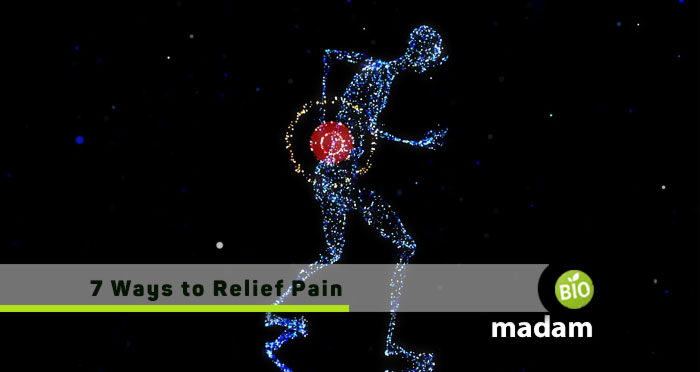Chronic pain can affect your daily life. You may struggle to work, relax, or sleep due to discomfort. The most effective way to address chronic pain is to consult your doctor to provide the necessary treatment and medication, such as analgesics. While prescriptions may work, there are also expert-approved alternatives that may also ease the aches.
There are many effective alternative treatments for pain relief and management. You may try them along with prescription medications, with the guidance of a health professional, to ensure your safety and the treatment’s effectiveness. Most of these methods apply to feelings of discomfort caused by injury, inflammation, stress, and muscle soreness.
That said, you’ll learn seven alternative treatments to aid in pain relief and management in this blog post.
Dry Needling
Dry needling, or trigger point therapy, is a well-known alternative treatment for pain relief and management. It’s similar to acupuncture due to the use of needles, but they have several differences. For instance, dry needling targets the knots of the muscles, while acupuncture focuses on energy balance. But before you choose either, check out resources regarding dry needling versus acupuncture to learn more about both treatments.

Nonetheless, dry needling may help relieve headaches, neck pain, back pain, muscle tightness, tendonitis, and pain from a sports injury. Dry needling helps release the spasms or trigger points through small skin pricks. Some patients report instant relief from one or two sessions, while some might need it regularly for better pain management.
Chiropractic Treatment
Chiropractic treatment involves spinal and joint manipulation to relieve pain. It’s a well-known method for adjusting the body’s proper alignment and posture to reduce discomfort and increase mobility. It can also release muscle tension.
This therapy is suitable for neck pain and back ache. It also brings relief to patients struggling with sciatica a herniated disk might cause. Chiropractic treatment offers different methods, such as soft tissue therapy, manual therapy, and exercise therapy. The professional will determine which is suitable for a specific condition.
Massage Therapy
Massage therapy is a common treatment for general pain management, which can also induce relaxation. It involves kneading and applying pressure on the soft tissues and muscles to release tension and ease discomfort. It’s one of the most common methods in physical therapy that helps people recovering from injuries and chronic illnesses.
Getting a massage helps relieve muscle and joint pain. Pressure eases stress and stiffness, which are common culprits of typical body aches. Like chiropractic treatment, massage therapy can also help increase mobility and reduce muscle soreness.
Yoga
Yoga is a therapy that involves the body and mind. It can help ease your physical discomfort and also relieve the mental and emotional stress that accompanies it. Yoga is also a proven exercise that increases flexibility, suitable for those struggling with joint pain.
Regular yoga sessions help improve pain relief and management. It’s an excellent supplementary treatment, along with prescribed medications. Your instructor will teach you some effective yoga poses to help reduce the physical discomfort. Yoga can also relax your mind and improve your overall health and well-being.
Hot and Cold Compress
Hot or cold compress is best for quick pain management at home. Heat therapy relieves muscle tension and stiffness by improving blood circulation. It may help quicken the healing and recovery of damaged tissues. On the other hand, cold therapy is suitable for easing pain from acute injuries. Lowering the temperature of the affected area reduces inflammation and swelling.
Knowing when to use hot and cold compress is necessary for pain management. The general rule is to avoid applying too hot or too cold on your skin since it may cause irritation and discomfort. It’s always best to consult your doctor which treatment might be best for your pain.
Aromatherapy
Aromatherapy involves the utilization of fragrant essential oils for relaxation and pain relief. You can inhale these oils or apply them topically. Although further research has yet to confirm its effectiveness, studies show how specific essential oils show therapeutic benefits.
Some essential oils that help with pain management are lavender, peppermint, bergamot, rose, chamomile, eucalyptus, wintergreen, clove, and frankincense. The most common oils for topical treatments are wintergreen and peppermint. When applied, they cause a tingling and cooling sensation that eases pain.

Aside from relieving body discomfort, these oils can also help reduce stress. For instance, inhaling lavender can help you relax and sleep better. It’s ideal for those struggling to fall asleep due to chronic pain.
Herbal Remedies
Herbal remedies have been used for centuries. It involves using botanicals to treat various pain and illnesses. Although herbal medicine doesn’t guarantee efficacy due to the lack of standard doses, it can be an excellent supplement for pain management.
One well-known natural anti-inflammatory herb is turmeric. You may drink turmeric tea to help relieve stomach aches due to indigestion. It also contains antioxidants to protect your body from free radicals, which aids in faster recovery from injuries. Plus, many studies have attested to turmeric’s ability to reduce swelling. Moreover, you may also use yogurt to improve your GI function.
Conclusion
Finding the proper treatment for pain relief and management can be a lifesaver. It can help you regain normal physical function and improve overall well-being. If you’re struggling with chronic pain or physical discomfort, talk to your physician to know the most suitable therapy.

Hi, they call me Jenna, and I am also known for achieving a gold medal during my Ph.D. in science life. I always had a dream to educate people through my utmost writing hobby. So, I chose this blogging path, and Biomadam gave me this opportunity to present for them. I now stand to entertain you. Continue reading my articles & discuss if you’ve any confusion through the comment section below.

